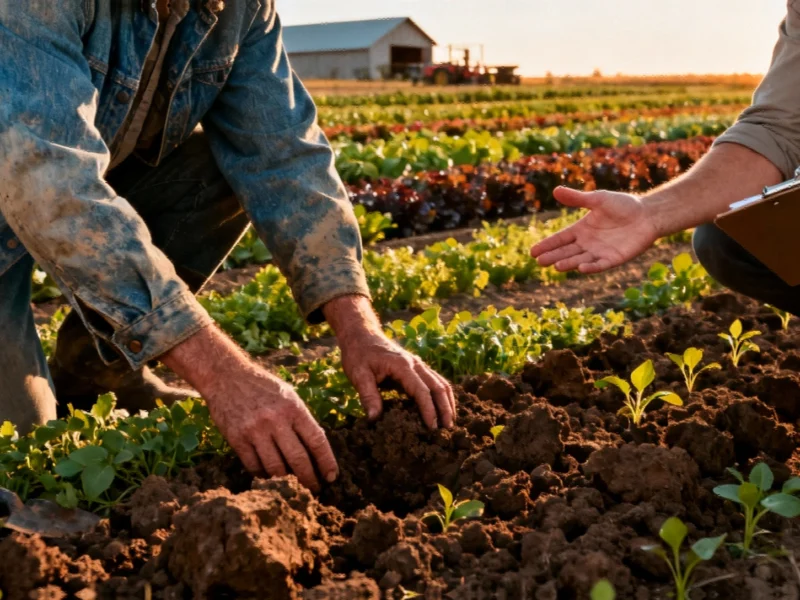Digital Transformation in Agriculture
A revolutionary virtual dairy farm project is poised to transform the agricultural industry through advanced digital twin technology, according to reports from Scotland’s Rural College (SRUC). The initiative, funded through the wider Digital Dairy Chain scheme, creates dynamic virtual models of physical farming operations that update in real-time using sensor data.
Table of Contents
Real-Time Data Integration
The farm-twin system aggregates information from multiple sources including animal health records, milk production metrics, feed intake statistics, and environmental conditions, sources indicate. Data scientist Dr. Mazdak Salavati explained that “the real power of farm data lies in combining different sources to uncover insights that a single system alone can’t provide.”
Analysts suggest the technology represents a significant advancement in agricultural data management. “Farm-twin addresses this challenge head-on by aggregating data from a wide range of technologies into a single, unified platform,” Dr. Salavati stated in the project announcement.
Open-Source Accessibility
In a move that could accelerate industry-wide adoption, the farm-twin platform has been developed as completely open-source software. This approach means anyone can freely download, use, modify, and distribute the code without restrictions. Dr. Matt Broadbent, agri-tech scientist at SRUC, noted that “it ensures transparency, fosters innovation, and lowers the barriers for adoption across the industry.”
Automated Decision-Making Capabilities
The system reportedly includes capabilities to automate certain decision-making processes for farmers, potentially revolutionizing daily operations. According to the report, the digital twin technology creates virtual models that simulate real-world conditions, enabling farmers to test scenarios and optimize outcomes before implementing changes in physical operations.
Chief executive Wayne Powell emphasized the system’s potential to help create a “more productive, resilient, and sustainable future” for dairy farming. The technology comes at a critical time when the agricultural sector faces increasing pressure to improve efficiency while addressing environmental concerns.
Industry Implications
The development signals a broader trend toward digitalization in agriculture, with experts suggesting such technologies could become standard across farming operations. By leveraging real-time data and advanced modeling, the platform enables farmers to make more informed decisions about resource allocation, animal welfare, and operational efficiency.
The project represents a collaborative effort between researchers, data scientists, and agricultural experts, demonstrating how cross-disciplinary approaches can drive innovation in traditional industries. As the technology evolves, analysts suggest it could set new standards for data-driven farming practices worldwide.
Related Articles You May Find Interesting
- Iran’s Solar Surge: How Energy Crisis Catalyzes Renewable Transition Amid Infras
- Google’s Massive Arm Migration: How AI and Automation Are Driving the Biggest Ar
- The Invisible War: Why Legacy Bot Defenses Can’t Keep Up With AI-Powered Automat
- Researchers tout vector-based automated tuning in PostgreSQL
- Oklo’s Nuclear Ambition: A $20 Billion Bet on AI’s Energy Future
References & Further Reading
This article draws from multiple authoritative sources. For more information, please consult:
- http://en.wikipedia.org/wiki/Scotland’s_Rural_College
- http://en.wikipedia.org/wiki/Mathematical_model
- http://en.wikipedia.org/wiki/Real-time_computing
- http://en.wikipedia.org/wiki/Sensor
- http://en.wikipedia.org/wiki/Decision-making
This article aggregates information from publicly available sources. All trademarks and copyrights belong to their respective owners.
Note: Featured image is for illustrative purposes only and does not represent any specific product, service, or entity mentioned in this article.

